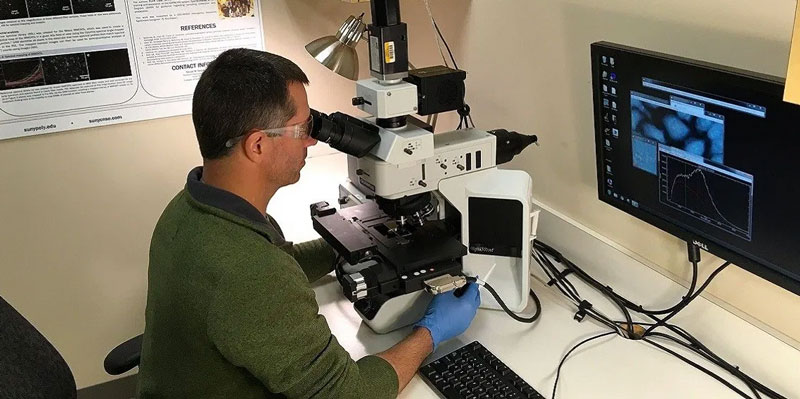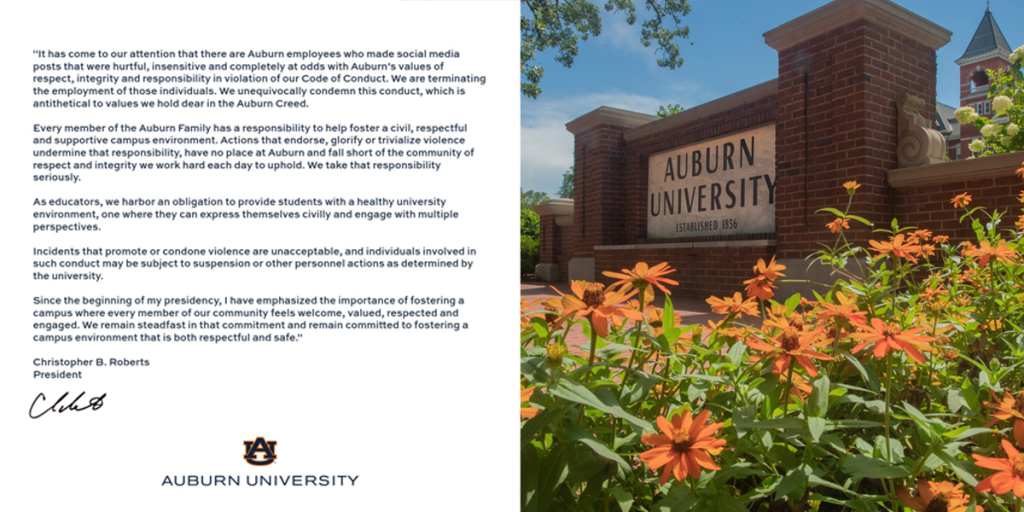An Auburn University-developed light microscope technology that has been on the market since the early 2000s has found new potential as a research tool on the COVID-19 battlefront.
CytoViva Inc., a subsidiary company of the Auburn Research Park-based firm Aetos Technologies Inc. – and the registered name for the patented microscope technology developed by professor Vitaly Vodyanoy of Auburn’s College of Veterinary Medicine – has partnered with Joanna Sztuba-Solinska, an assistant professor of biological sciences in the College of Sciences and Mathematics, to aid in her research efforts.
A molecular virologist, Sztuba-Solinska has previously focused on the herpesviruses, but has expanded her research to study SARS CoV-2, the virus that causes the COVID-19 disease.
“This is a dramatically different type of virus,” she said. “I study Kaposi’s sarcoma-associated herpesvirus, which is a DNA virus that, as most herpesviruses, coevolved with human population for a very long time, thus it is much less virulent.
“SARS CoV-2 is a newly emerged virus with probably the largest RNA genome, and the unique capacity of proofreading its mistakes – which you usually don’t see with RNA viruses. However, because it’s an RNA virus, it has more, so to speak, evolutionary flexibility, meaning it can undergo mutations and go from animal reservoir to, unfortunately, human reservoir. Also, because it is a newly emerged virus, it has a much greater virulence, that is, the capacity to cause the disease or even death.”
While Sztuba-Solinska is optimistic that efforts underway to produce a COVID-19 vaccine will be successful, the process takes many months to develop, test and confirm effectiveness and safety.
Her research in COVID-19 is focused on collaborating with researchers in the Samuel Ginn College of Engineering on polymers to use in antimicrobial materials for face masks and in determining if the differences in coronaviruses can be detected visually.
“This is where I will be able to use the CytoViva microscope and its high-resolution capabilities,” she said.
Introduced in 2004, CytoViva technology has been installed in leading national research laboratories, academic institutes and private industrial labs across the Americas, Asia and Europe.
CytoViva has focused on the engineered nanomaterials world associated with drug delivery. In 2008, CytoViva integrated its proprietary technology with a patented microscope developed by Vodyanoy.
“Interestingly, though, viruses are nanoparticles, too,” said Byron Cheatham, CytoViva vice president for marketing. “Given CytoViva’s capability to detect live viruses like coronavirus, we have reached out to the biomedical community. We firmly believe that this technology can be an effective and efficient tool on the front against COVID-19 and other infectious diseases research.”
Vodyanoy, who was named a fellow of the National Academy of Inventors in 2013, added that “hyperspectral imagery of a single cell” would allow identification of the coronavirus infection.
The CytoViva microscope won several major national awards: R&D Magazine’s top 100 most technologically significant products introduced in 2006 and 2007 and the Nano 50 Award by NASA Tech Briefs, which recognizes the most exceptional new products in the nanotechnology field.
This story originally appeared on Auburn University’s website.
(Courtesy of Alabama NewsCenter)













